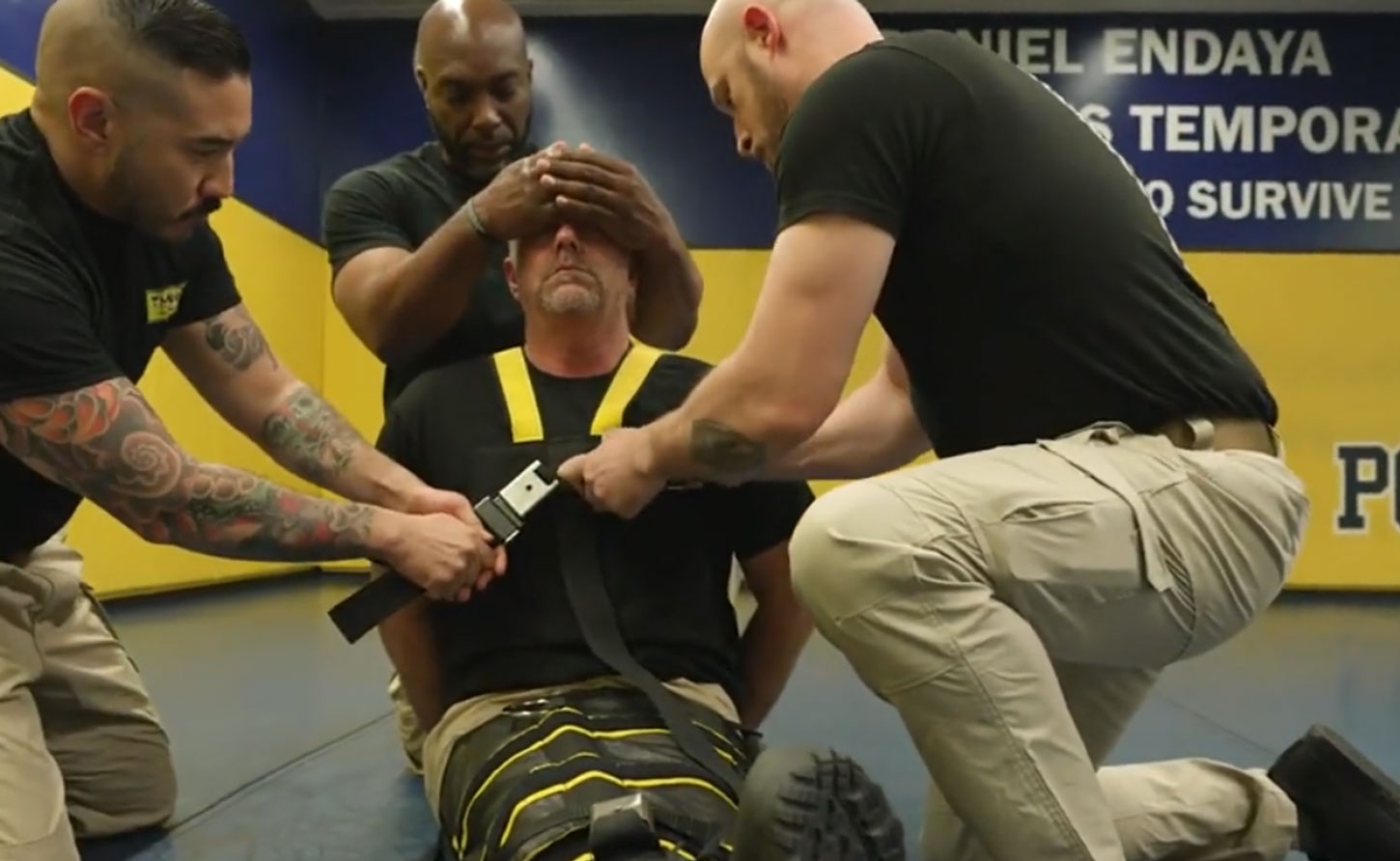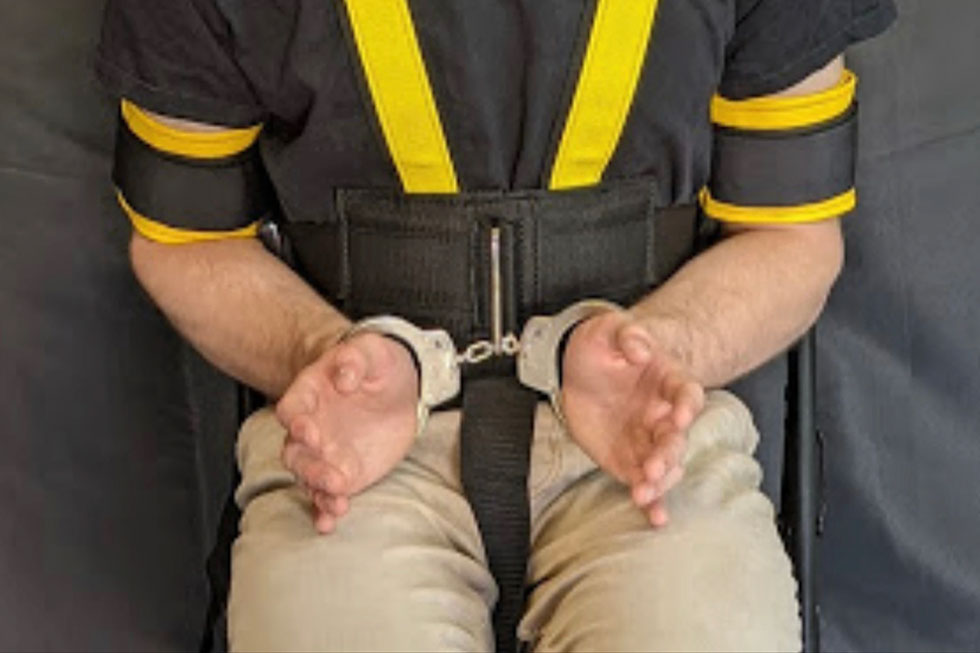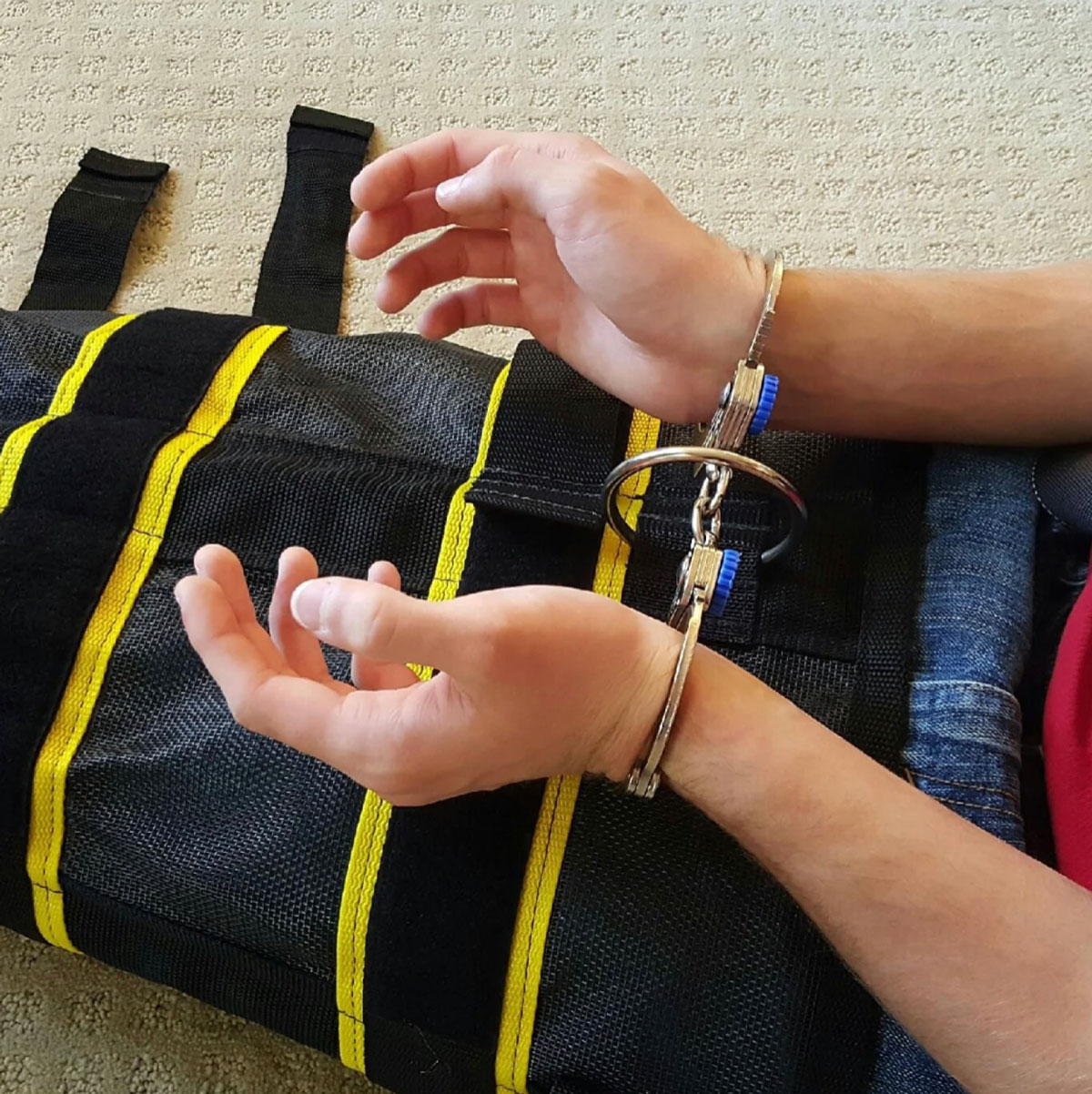UNITED STATES | The Middle Passage, Reversed: ICE's Shackling of African Deportees

They came for him in the middle of the night.
The Nigerian man described being roused from sleep in September alongside other detainees. U.S. Immigration and Customs Enforcement officers clasped shackles on their hands and feet, he said, then told them they were being sent to Ghana—even though none of them was from there.
When they asked to speak to their attorneys, the officers refused. Then came the straitjacket: a full-body restraint suit called the WRAP, cinched tight around already-shackled bodies, before they were loaded onto a plane for the 16-hour flight to West Africa.
Centuries after Africans were kidnapped from their homelands, chained in the holds of slave ships, and forced across the Atlantic, their descendants are being chained for the journey back.
"It was just like a kidnapping," the Nigerian man told The Associated Press from the detention camp in Ghana where he remains held. "They bundled me and my colleagues, tied us up in a straitjacket."
The device goes by several names among those who've experienced it: "the burrito," "the bag," a "straitjacket." Officially, it's the WRAP—a black-and-yellow full-body restraint that ICE has deployed on deportation flights with increasing frequency, particularly on African deportees being forcibly returned across the same ocean their ancestors were stolen across.
The Associated Press identified multiple cases of its use, interviewing five people who endured the restraints and documenting at least seven other cases through witnesses and family members in four countries.
 The modifications ICE requested from the manufacturer reveal the intent: a ring on the front to attach shackled hands during long flights, "soft elbow cuffs" connecting in the back to prevent movement while theoretically allowing circulation. These are restraints designed not for a brief intervention, but for endurance—for transatlantic journeys lasting up to 16 hours.
The modifications ICE requested from the manufacturer reveal the intent: a ring on the front to attach shackled hands during long flights, "soft elbow cuffs" connecting in the back to prevent movement while theoretically allowing circulation. These are restraints designed not for a brief intervention, but for endurance—for transatlantic journeys lasting up to 16 hours.
One deportee left in the WRAP for the entire flight to Ghana said officers undid the lower straps only once so he could use the bathroom. The West African deportee interviewed by AP described his legs swelling so severely he walked with a limp afterward.
Another man, deported to Cameroon in 2020, recalled officers "carrying me like a corpse" after they cinched the straps around his body on the tarmac.
The historical echo is almost unbearable in its clarity. The same geographic route. The same ocean. The same immobilization of Black bodies treated as cargo rather than people. Even the language mirrors itself across centuries: packed, bundled, carried like logs of wood.
The Cruel Mathematics of Return
The September flight to Ghana represents a particularly sinister arithmetic. Men were told they were being "returned" to a country none of them were from—a geographic fiction that nevertheless resulted in real chains, real terror, real deportation.
Upon arrival, they were held in Dema Camp, waiting in limbo much as their ancestors waited in the dungeons of Elmina Castle or Cape Coast Castle before the westward journey began.
But this time, the direction is reversed. These are not people stolen from Africa, but people stolen from America—many of them legal residents, some with pending cases, all denied access to attorneys before being wrapped, shackled, and loaded onto planes.
The Nigerian deportee's account reveals the procedure: wake them at night, shackle them immediately, refuse their requests for legal counsel, then apply the full-body restraints before they can mount meaningful resistance.
The psychological dimension cuts deeper still. These are often people who fled violence, who built lives in Western nations, who became citizens or legal residents. Now they find themselves bound and immobilized for a forced journey "home" to countries where they face persecution, violence, or—as in the case of those sent to Ghana—aren't even from in the first place.
A Legacy Written in Restraints
 The WRAP's death toll tells its own story. The AP identified 43 cases where police or correctional officers used the device on someone who subsequently died. In 12 of those cases, autopsies specifically listed "restraint" as a contributing factor.
The WRAP's death toll tells its own story. The AP identified 43 cases where police or correctional officers used the device on someone who subsequently died. In 12 of those cases, autopsies specifically listed "restraint" as a contributing factor.
Rolin Hill died in Virginia Beach after officers left him in the WRAP at the jail, where video shows deputies punching his immobilized body. His death was ruled a homicide caused by "positional and mechanical asphyxia due to restraint with neck and torso compression." Three deputies now face murder charges.
In Missouri, Othel Moore Jr. asphyxiated in the WRAP after jailers had also sprayed him with tear gas and placed a "spit mask" over his face. Footage shows him repeatedly telling officers he couldn't breathe. Five jailers have been charged in his death.
The manufacturer, Safe Restraints Inc., insists the device was never meant for people who are simply afraid or protesting verbally. CEO Charles Hammond told AP that using the WRAP on someone who isn't violent or posing immediate danger "could be improper use." Yet every deportee interviewed described being restrained not for violence, but for crying, for pleading, for asking to speak to their attorneys.
"That's not the purpose of the WRAP," Hammond said. "If (the deportee) is a current or potential risk to themselves, to officers, to staff, to the plane, restraints are justified. If it's not, then restraints aren't."
If it's not. But it is happening—repeatedly, systematically, disproportionately to African deportees.
The Silence and the System
ICE has spent $268,523 on WRAP devices since 2015, with 91 percent of that spending occurring under Trump administrations. The agency refuses to provide records documenting the device's use despite multiple requests from AP and won't disclose how frequently it has been deployed.
The Department of Homeland Security's own civil rights division raised "serious concerns" about ICE's use of the WRAP in a 2023 report, citing lack of training, absence of clear policies, and reports of deaths involving the device. Earlier this year, the Trump administration largely dismantled the office that produced that report, calling it a roadblock to enforcement operations.
There is no public policy governing when or how ICE should use the WRAP. There is no tracking of its deployment, despite federal law requiring documentation when officers use force. There is only the device itself: black and yellow straps, metal rings, and the bodies of African deportees immobilized for transatlantic flights.
"The use of these devices is inhumane and incompatible with our nation's fundamental values," said Noah Baron, an attorney representing the West African deportees.
But perhaps it is entirely compatible—a direct line connecting the legal apparatus that once enabled slavery to the bureaucratic mechanisms of contemporary deportation. The same nation that built its wealth on African bodies stolen westward across the Atlantic now returns their descendants eastward, shackled and straitjacketed in the cargo hold of government planes.
The reversal is complete. The ocean remains the same. Only the direction has changed.
And the chains—the chains remain exactly where they've always been.
-30-

 Ar
Ar  En
En